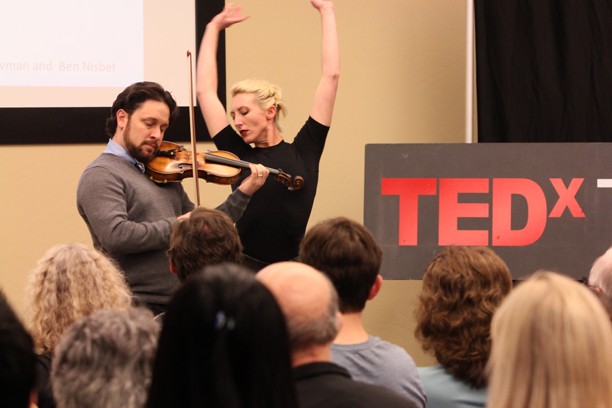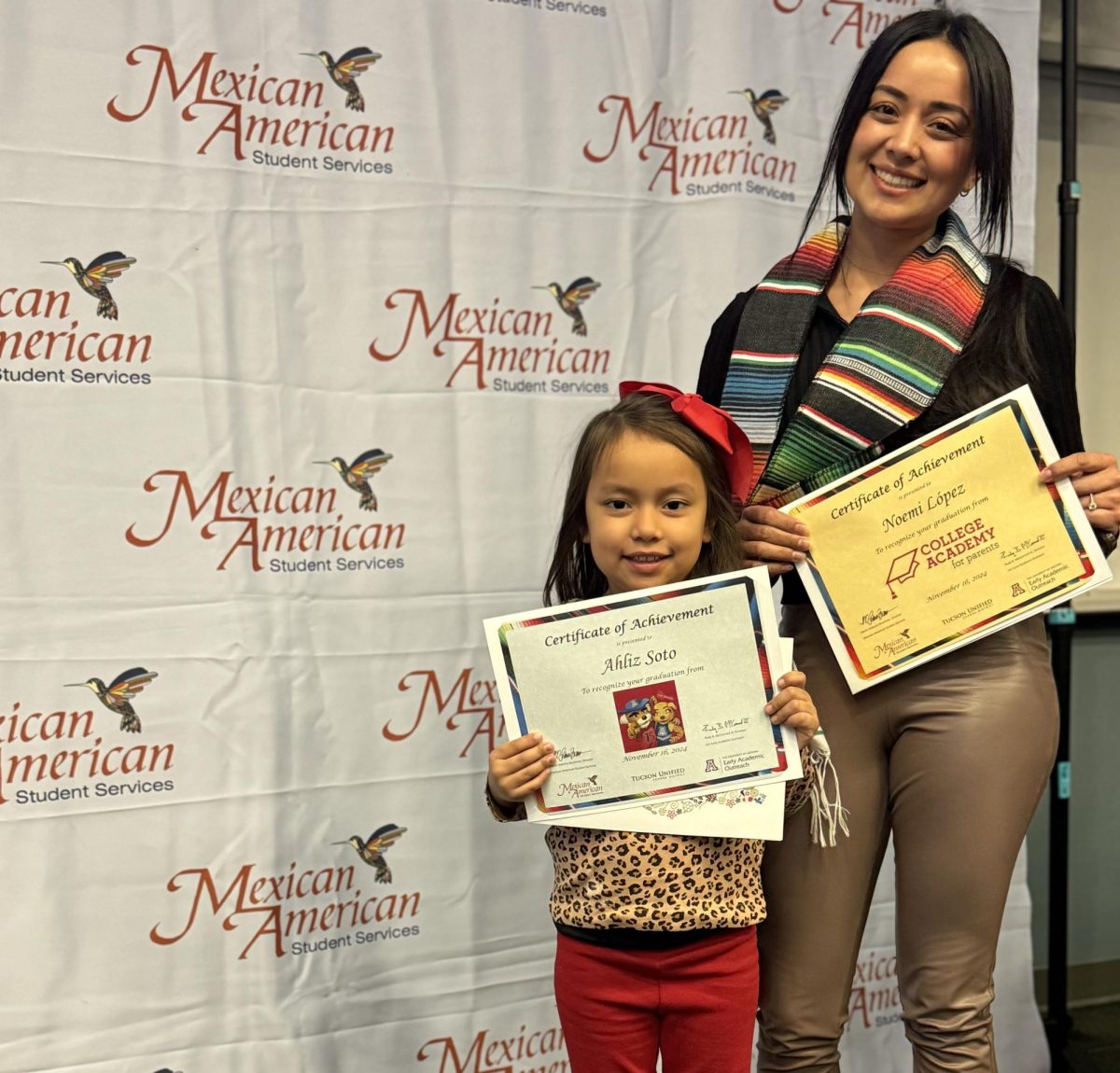UA community members learned about the development of new surgical training methods, a local dance project and the OSIRIS-REx project at the UA Bookstore Tuesday night.
The TEDxTucsonSalon series brings live talks from local people doing interesting things in the community and around the world. The featured speakers for this week’s event were Jerzy Rozenblit, Ashley Bowman and Daunte Lauretta.
Rozenblit, a university distinguished professor in the Electrical and Computer Engineering Department at the UA, discussed the virtually assisted surgical training methods and systems, along with computer-guided techniques for minimally invasive surgery he is developing with the Arizona Surgical Technology and Education Center. Rozenblit brought one of the virtual training systems and showed a short video on how technology in computer-guided techniques would improve recovery time and surgical errors.
Bowman, leader of the Artifact Dance Project and her husband Ben Nisbet, musical director of the project, performed a sampling of their company’s performance.
Their dance company combines live music, dance, and film. Bowman and Nisbet emphasized the importance of live, raw art collaboration and showed the audience the difference between live music and “canned” music.
“We [Bowman and the performers] sit down with Ben and we say, ‘What music do you want to play? Here’s the story what do you think?’” Bowman said. “Instead of the other process, which happens a lot in choreography, where the choreographer knows exactly what he or she wants.”
Lauretta, a professor of the Lunar and Planetary Laboratory at the UA, gave a brief presentation on asteroids and on the future of his project OSIRIS-REx.
The OSIRIS-REx program received funding from NASA in May 2011. The program will send a spacecraft into space in 2016 to collect samples of an asteroid for analysis.
The spacecraft will spend seven years traveling to the asteroid, collecting the sample, and returning to earth. Lauretta is one of the scientists heading the mission and has partnered with NASA to have the entire project done at the UA.
“The return occurs in September of 2023 and we have two years beyond that to analyze the material once it’s back on earth,” Lauretta said. “It’s a total 14-year commitment on my part.”
Many students and community members attended the talk to learn about the space mission and get more information on how to get involved.
“It was interesting because I felt like he definitely brought it down to a level where he could communicate with everyone,” said Catie Tuttle, a family studies and human development senior. “It was much more interesting. It was a good surprise.”









